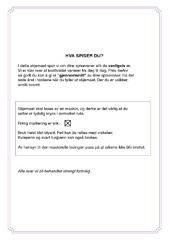| dc.description.abstract | Introduction: Cardiovascular diseases are the leading cause of death worldwide. It can be defined as a group of interrelated diseases of the heart and blood vessels, including atherosclerotic cardiovascular diseases. Acute myocardial infarction (AMI) may be the first manifestation of coronary heart disease (CHD) or it may develop during more chronic stages of CHD. The major risk factors for CHD are tobacco use, unhealthy diet, obesity, physical inactivity, hypertension, diabetes, and hyperlipidemia. Thus, life style changes affecting these risk factors are important in primary and secondary prevention of CHD. A high CHD risk diet comprises high intakes of fat, refined sugar, meat and low intake of fruits and vegetables. The essential nutrient choline, which is the focus of the current study, is found in virtually all foods, but meat and other animal products are the main sources of dietary choline among omnivorous populations. These are food items that, in accordance with current dietary guidelines, should be limited in our diet. Intak of choline has been linked to increased AMI risk. However, few studies have investigated the association between choline intake and risk of AMI in patients with established CHD. Objective: To analyse a possible association between choline intake and risk of AMI in patients with suspected stable angina pectoris. Methods: We used data from 2019 patients from the Western Norway B-Vitamin Intervention Trial who underwent coronary angiography at baseline. Average food consumption for the previous year was collected via a 169-item food frequency questionnaire at baseline. Total intakes of choline and choline species were adjusted by total energy intake by using the residual method. For continuous variables, we used Students T-test to analyze differences between patients who developed AMI and those who did not, and linear regression to explore trends across quartiles of total choline intake. For dichotomous and categorical variables logistic regression and Fisher’s exact test were used, respectvely. For estimating the risk of AMI, Cox proportional hazards regression models were used. Hazard ratios and confidence intervals are presented per 100 mg increase in total choline intake and for each 10 mg increase in free choline, phosphatidylcholine, phosphocholine, sphingomyelin and glycerophosphocholine. Three models were tested to control for confounders on the effect of dietary choline on risk of AMI. Finally, potential non-linear associations between choline intake and risk of AMI were explored using general additive models. Results: Mean (SD) daily total choline intake among the 2019 participants was 294 (65.1) mg (79.7% were men, mean age was 61.8 (9.7) years). No significant association between choline intake and sex, age, prior CVD or extent of coronary artery disease (CAD) at baseline. Higher choline intake was however positively associated with several established CVD risk factors including smoking (p <0.001), BMI (p <0.001), hypertension (p <0.005), diabetes (p < 0.001), serum glucose (p <0.001), but inversely associated with plasma total homocysteine (Hcy) (p <0.001). No association was observed with lipid related parameters. During a median follow up of 7.2 (2.4) years, 297 patients experienced an AMI. In the crude model, adjusted for total energy intake, the risk of AMI increased with 28% (CI 1.09-1.49) for each 100 mg increase in choline intake. Model 2 was also adjusted for sex, age, smoking, previous AMI, previous coronary artery bypass grafting (CABG) and extension of CAD at baseline. Model 3 was further adjusted for BMI and diabetes. In the multivariate models the risk was slightly attenuated. Intake of phosphatidylcholine and sphingomyelin was positively associated with risk of AMI, whereas intake of free choline, phosphocholine and glycerophosphocholine showed no association with AMI risk. Conclusion: In patients with SAP, a higher intake of choline is associated with a number of established risk factors for CVD but with independent excess risk of AMI. | en_US |

